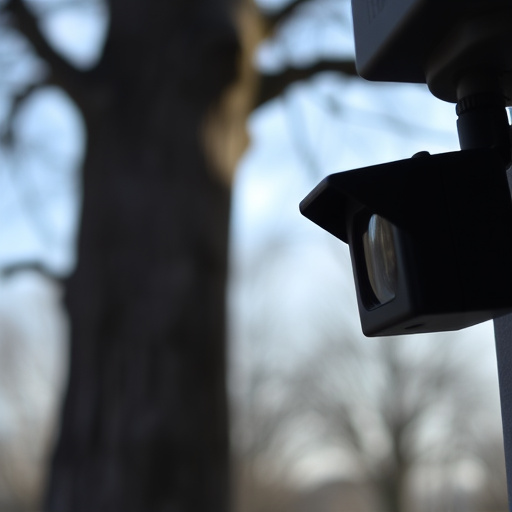Disguising security cameras within everyday objects like clocks, plants, or light fixtures offers a sleek and subtle approach to surveillance. By leveraging common household items as enclosures, this technique enhances security without sacrificing aesthetics. Creative options include fake rocks with built-in cameras and seamlessly integrated window stickers, ensuring both functionality and discretion. Ethical considerations, such as transparency and balancing security needs with privacy, are crucial for effective and responsible implementation.
“Uncover the art of concealed security camera mounting with our comprehensive guide. Explore strategies to seamlessly integrate surveillance into everyday environments, ensuring both effectiveness and discretion. Discover how to choose discreet mounting locations, transform ordinary items into hidden cameras, and employ environmental camouflage techniques for a nearly invisible setup. Additionally, we address safety and ethical considerations for responsible implementation. Learn to disguise cameras within your surroundings, maintaining privacy while enhancing security with innovative, out-of-the-box solutions.”
- Choosing Discreet Mounting Locations
- Integrating Cameras with Everyday Items
- Utilizing Environmental Camouflage Techniques
- Safety and Ethical Considerations for Hidden Cameras
Choosing Discreet Mounting Locations
When mounting security cameras, discretion is key to maintaining an unintrusive and aesthetically pleasing environment. One effective strategy is to disguise cameras within everyday objects that blend seamlessly into their surroundings. For instance, a camera can be incorporated into a decorative wall clock, a potted plant, or even a light fixture, making it nearly impossible for potential intruders to identify its true purpose.
This approach leverages the natural tendency to overlook obvious security measures. By integrating cameras into everyday items, you create a sense of normalcy and avoid drawing attention, thereby enhancing the overall security without sacrificing aesthetics. This subtle mounting technique requires careful planning and selection of suitable locations, ensuring that the camera’s presence remains hidden from prying eyes.
Integrating Cameras with Everyday Items
Disguising cameras within everyday objects is an innovative way to enhance security while maintaining a sleek and subtle appearance. This approach leverages common household or office items as camera enclosures, making surveillance nearly unnoticeable. For instance, integrating a camera into a decorative vase, book, or even a mock rock can provide comprehensive coverage without raising suspicion. These hidden cameras are designed to blend seamlessly with their surroundings, offering peace of mind and advanced monitoring capabilities.
By disguising cameras in everyday objects, users can capture high-quality footage while maintaining privacy and security. This technique is particularly useful for homes, businesses, and public spaces where discretion is key. With careful planning and selection of suitable items, it’s possible to create an extensive network of surveillance cameras that remain virtually invisible to the untrained eye.
Utilizing Environmental Camouflage Techniques
Disguising security cameras in everyday objects is a clever way to maintain covert surveillance. This technique, known as environmental camouflage, involves integrating cameras into common household items or surrounding structures. For instance, mounting a camera inside a weather-resistant lamp post or blending it within decorative brickwork can make it nearly invisible to the untrained eye. By utilizing these methods, you can capture footage without drawing attention, making it ideal for discreet monitoring.
Creative camouflage allows for strategic placement, ensuring optimal viewing angles while maintaining an aesthetically pleasing environment. From fake rocks that house tiny cameras to seamlessly integrated window stickers, there’s a vast array of options available. These solutions offer both functionality and discretion, providing property owners and businesses with effective security measures while preserving the natural look and feel of their spaces.
Safety and Ethical Considerations for Hidden Cameras
When mounting hidden security cameras, it’s crucial to balance functionality with safety and ethical considerations. Disguising cameras within everyday objects can make them less noticeable, but it also raises questions about privacy and consent. It’s essential to choose items that aren’t inherently suspicious or invasive; for instance, using a cleverly designed light fixture or decor piece as a camera housing can be more acceptable than masking a clear camera lens with minimal cover.
Additionally, placement is key. Cameras should be positioned in areas where there’s a legitimate security need and avoid capturing sensitive data without individuals’ knowledge. Ethical guidelines also suggest transparency; if a hidden camera is discovered, it’s best to have policies in place that inform people about its presence. This approach fosters trust and respects the privacy rights of all parties involved.
When mounting security cameras discreetly, creative integration with everyday items and environmental camouflage techniques offer effective solutions. By choosing locations that blend seamlessly with the surroundings and utilizing objects as cover, you can create a robust security system while maintaining privacy. Remember to balance these methods with ethical considerations and local laws to ensure your setup remains legal and respectful of personal freedoms. Disguising cameras in everyday objects like plants or light fixtures (discreet camera mounting) enhances both functionality and aesthetics, making them less noticeable to potential threats.
